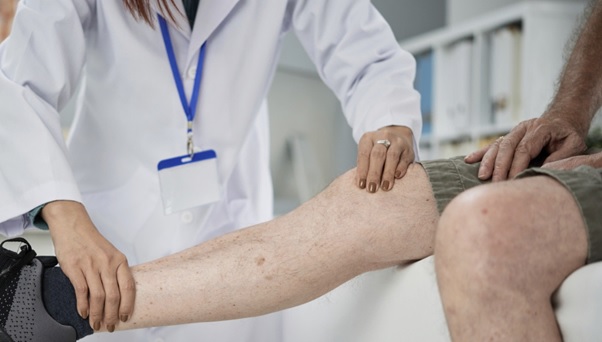What Is Peripheral Artery Disease & How Is It Diagnosed
Peripheral artery disease (PAD) is the blockage or narrowing of the arteries that supply blood to our arms and legs. Typically, the legs’ arteries are the most affected. PAD cases in Australia remain high. Unfortunately, when the disease left untreated, it can lead to unnecessary amputations, especially given the condition is often overlooked and the minor inconvenience or pain it causes is mistaken for being part of the ageing process.
Thankfully, GPs have an easy way to diagnose the problem, with the ankle brachial index, or ABI doppler, being the first and foremost way to diagnose the problem.
So, with the above in mind, let’s take a closer look at this risky condition and why it is something you don’t want to accidentally overlook:
- What causes PAD & who is most affected?
PAD is caused by a plaque buildup in the peripheral arteries – these are the arteries responsible for delivering blood further away from the heart. This plaque, comprising fatty deposits, can be caused by many things, including obesity, diabetes, smoking, high cholesterol and heart disease.
If artery disease runs in your family, then you are at a higher risk of developing PAD. However, maintaining healthy lifestyle decisions goes a long way to reducing your risk of developing PAD.
What are the symptoms of PAD?
Patients suffering from PAD typically complain of leg pain after physical activity, leg numbness and tingling or numbness in the feet and toes. Other symptoms include shiny skin with loss of hair or cold or bluish skin. Finally, an ongoing foot ulcer that won’t heal is a dangerous indicator of serious PAD.
How do doctors diagnose & treat PAD?
Diagnosing PAD can be as simple as your GP examining a non-healing wound and taking your pulse. However, the most common method enlisted is using a high quality ABI doppler, an instrument which compares the blood pressure in your arm with the blood pressure in your ankle, before and right after moderately walking. Your doctor may also utilise an ultrasound to identify any artery blockages you may be experiencing.
To begin PAD treatment, your GP will advise some handy lifestyle changes like losing weight, exercising more, quitting smoking, changing your diet to include foods that are in healthy fats and fibre but low in saturated fats. They may also prescribe medication to help with blood vessel dilation, but more serious cases may require surgical assistance like angioplasty, bypass surgery or stents.
Does PAD have an effect on wound healing?
Patients suffering from PAD are susceptible to having wounds on their feet and legs that refuse to heal due to a lack of oxygen-rich blood reaching the feet and legs’ injured tissue. PAD actually contributes to 10-30% of all ulcers that are found on the lower limbs. Therefore, it is imperative for wound patients with PAD to receive proper care to prevent infection and promote healing as well as avoid possible hospitalisation.
In conclusion, PAD is not something that should be dismissed or overlooked as the pains of growing older. In fact, it is a risky condition that can, in worst cases, lead to surgical intervention and even amputation, and should be treated as soon as your GP diagnoses the issue through the use of an ABI doppler.
This way, you will have a much greater chance of defeating the condition before the need for serious medical intervention.


Comments are closed.